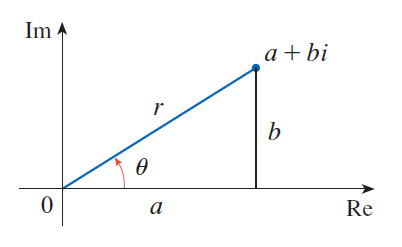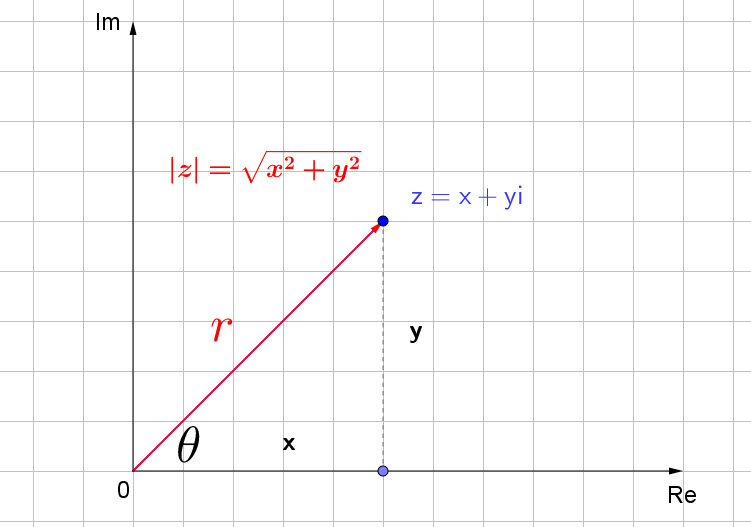Introduction to vectors and polar coordinates
Vectors:
Vectors are widely used in navigation, physics, engineering etc…
The vector is always defined by its magnitude (the length of the vector or size) and its direction.
A simple example is a ship steering a certain course at a certain speed. The vector obtained is very useful in collision avoidance calculation.
Without the direction, this magnitude is simply called a ![]() .
.
Vectors can be noted using the lowercase letters such ![]() or
or ![]() .
.
They can also be written ![]() . The length can then be
. The length can then be ![]() or
or ![]() .
.
For the vector ![]() , the length can be written
, the length can be written ![]() .
.
When adding vectors, we can use the angles and trigonometry or simply draw them.
This was just a quick introduction, we’ll discuss vectors in later chapters.
Polar coordinates 
In the plane, these are:
![]() is the distance from origin and
is the distance from origin and ![]() is the angle between
is the angle between ![]() and
and ![]()
Follow the trigonometric increase of angles, counter-clockwise.

![]() .
.
Please note that:
![]()
Please see the example of some points in the polar coordinates in the graph.
Polar and cartesian
For a point ![]() , we have
, we have ![]()
We can see the relationship from our trigonometric functions:
![]()
![]()
Raising both to the square and adding we get:
![]()
We can also divide:
![]()
We will this this quick intro in the complex numbers calculations.
Modulus of a complex number
The ![]() of a complex number
of a complex number ![]() is denoted by
is denoted by ![]() and is the distance between the origin and the point Z.
and is the distance between the origin and the point Z.
This is also the length of the vector corresponding to the complex ![]() .
.
For any complex number, we can write:
![]() . The distance is always
. The distance is always ![]() .
.

That yields:
![]()
We can also write the same equation:
![]()
Other formula:
![]()
![]()
![]() if
if ![]()
Argument of a complex number
The argument of a complex ![]() is the angle
is the angle ![]() between the real axis and the line connecting
between the real axis and the line connecting ![]() to
to ![]() .
.
It is called ![]() .
.

Polar-coordinate of complex numbers:
We have just seen the modulus and argument of complex numbers. These are the polar coordinates of the given complex number. As we’ll see soon, the polar coordinates are very useful in complex numbers calculation.
Let: ![]() and
and ![]() .
.
We can write:
![]() and
and ![]()
Now ![]() is:
is:
![]()
After factoring:
![]()
We notice that when we use multiples of ![]() , we will get a multi-valued Arg(z).
, we will get a multi-valued Arg(z).
To come around that, we define the ![]() of
of ![]() in the interval
in the interval ![]()
So, for any complex ![]() we have the following:
we have the following:
![]()
Calculating  using polar coordinates
using polar coordinates
![]()
![]()
\begin{split}
z_1z_2&=r_1r_2(\cos \theta +i \sin \theta )(\cos \phi +i \sin \phi)\\
&=r_1r_2((\cos \theta \cos \phi+\sin \theta \sin \phi i^{2})+i(\cos \theta \sin \phi+\sin \theta \cos \phi)\\
&=r_1r_2(\cos(\theta +\phi)+i\sin(\cos(\theta +\phi)
\end{split}
This shows that the new modulus is the product of the moduli and the new argument is the sum of the arguments.
The following notation may be used:
![]()


Be the first to comment